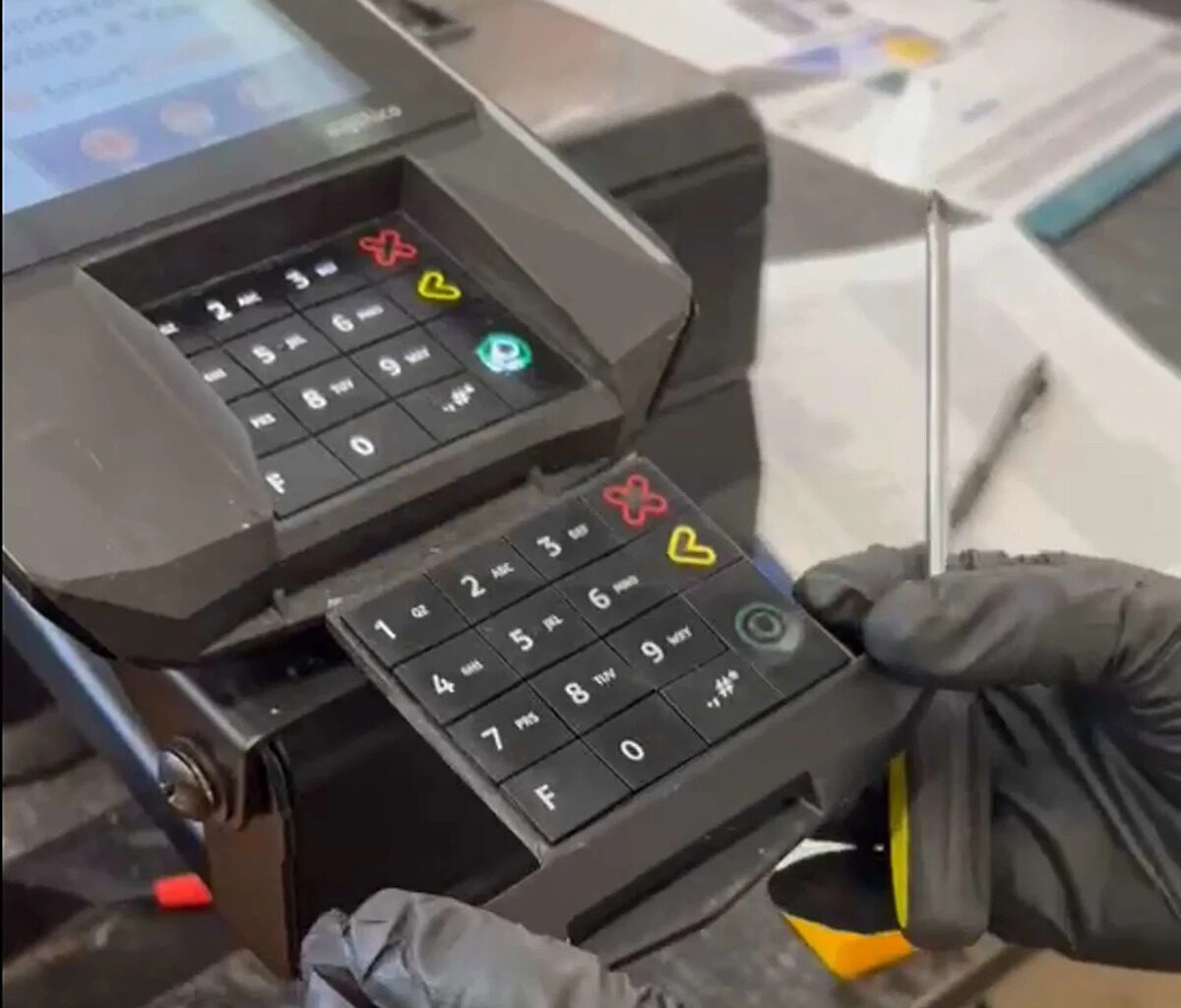A convenience store clerk turns their back to grab a pack of cigarettes – that’s all the time a scammer needs to slip a fake PIN pad or card terminal onto the shop’s credit card reader.
“No, wrong cigarettes,” the phony patron might say.
The cashier turns once again to the rack behind them. That buys the fraudster an extra moment to make sure the deceptive device is secure.
When the next person in line swipes their credit card for a cold soda or a bag of chips, their card information is stored and stolen. The cashier and the customers are none the wiser.
It’s called credit card skimming, and San Antonio police and U.S. Secret Service agents surveyed the city Tuesday and Wednesday to find fraudulent devices and educate business owners.
The joint operation is part of a nationwide effort by the Secret Service to bring down skimmers who are increasingly targeting a vulnerable population: People using EBT cards to pay for food and other necessities through government assistance.
Since April 2024, agents have traveled to major cities such as Atlanta, Baltimore and Boston, finding dozens of skimming devices along the way.
“No community is protected from this anywhere across the country,” said Michael Peck, assistant special agent in charge of the criminal investigations division.
The San Antonio Express-News embedded with Secret Service agents during the local operation. Here’s what law enforcement found, and what shoppers should know to protect themselves.
Scanning for scammers’ skimmers
It takes Secret Service financial analyst Vince Porter less than a few minutes to search an entire gas station and convenience store for fraudulent skimming devices.
He runs his hands over each payment terminal, from ATMs to gas pumps, tugging at the pieces and pressing on PIN pads to ensure skimmers haven’t placed fake parts on the machines. Then he gets down to eye-level with the card reader, peering inside.
At one convenience store on the North Side, Porter successfully completed his checks Tuesday without finding anything suspicious.
“That just means maybe they are not targeting this area, or the people here, the clerks and them, are keeping it from happening,” Porter said.
The cashier on duty told Porter he checks the payment terminals often. Porter encouraged the cashier to continue inspecting each device every day and showed him how to check the machines properly.
But at another store in San Antonio, a Secret Service agent slid a fake PIN pad right off the top of one payment terminal, revealing a circuit board fastened to the back.
Over the two-day operation, agents searched 712 San Antonio businesses and found 17 illegal skimming devices, according to the Secret Service.
The agency estimates that every credit card skimming device is worth about $1.04 million in stolen funds, according to Peck. That amounts to about $10 billion to $15 billion lost per year in the U.S.
Once law enforcement locates and removes the devices, the Secret Service begins to investigate who placed them, often people with ties to the cartel or other transnational groups, Peck said.
In some cases, the skimmer doesn’t even have to retrieve the device to steal the data. Some are now equipped with Bluetooth capabilities to share information remotely.
It’s easiest for them to target cash benefits stored on EBT cards because the cards themselves are less secure. Users must swipe their card using the magnetic stripe, which is far less secure than an embedded microchip that allows tap-to-pay.
Worse, funds stolen from EBT cards are rarely reimbursed, unlike debit or credit cards.
“They know what they’re doing. They’re capitalizing on our vulnerabilities here,” Peck said.
Protecting yourself from skimmers
There are a few things customers can do to ensure they don’t become a victim of skimming.
Authorities say that using a debit or credit card with an embedded microchip is the most secure method of payment. But before tapping or inserting a card, shoppers should always inspect the payment terminal. Be especially alert in tourist areas, which are popular targets for skimming.
Look for the following signs of skimming devices:
Light not shining under keypad
Customers can also pull on the PIN pad to ensure it is secure. In case of pinhole cameras that may be hidden near the PIN pad, users should cover their hand while entering their PIN.
When using ATMs, look for locations that are well-lit or indoors.
EBT users who believe their funds were compromised should contact their state benefits agency or card issuer immediately. Change your PIN if any funds remain and check whether you can temporarily block or freeze transactions.
The Secret Service is working continuously to prevent that fraud from happening in the first place, according to Peck.
“We’re not stopping,” he said.
This article originally published at Secret Service finds 17 ‘skimming’ devices in tour of San Antonio businesses.

